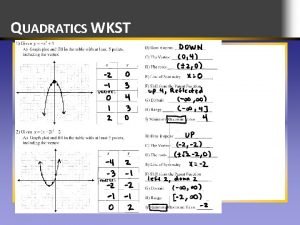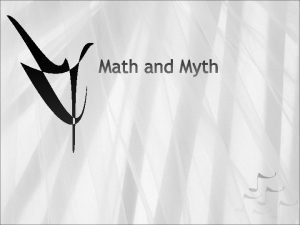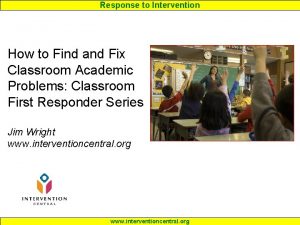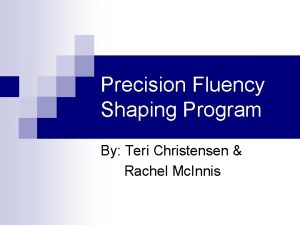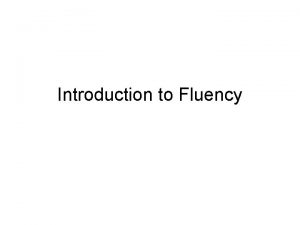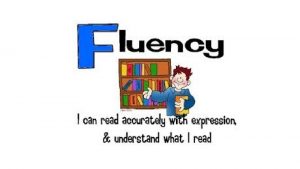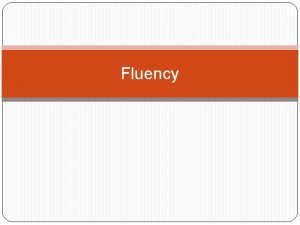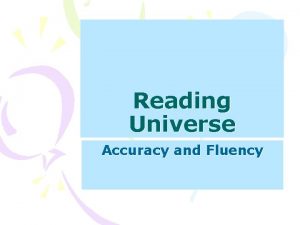Developing Fluency The Nature of Fluency has the









- Slides: 9

Developing Fluency

The Nature of Fluency has the following characteristics to develop: 1. (message-focused activity): Learners demonstrate fluency when they take part in meaning-focused activity and do it with speed and ease without holding up the flow of talk. 2. (easy tasks): Fluent language use does not require a great deal of attention and effort from the learner. 3. (performance at a high level): It involves making the best possible knowledge use of what is already known.

Developing Fluency • • Some suggestions of things to do before the fluency activity begins: brainstorming the topic, pre-reading on the topic, observation of others doing the activity, repeated opportunities to do the activity, preparing and practicing in the first language, prediction activities.

Fluency and Accuracy • Fluency is typically measured by speed of access or production and by the number of hesitations. • Accuracy is typically measured by the amount of errors. • Some theories see fluency as being related to a change in knowledge.

Techniques for Developing Fluency in Listening • The techniques involve meaning-focused activity (listening to interesting stories, puzzle and quiz activities, and activities with clear communication outcomes) • Focusing on language items, topics and experiences with which the learners are already familiar. • Encouraging the learners to reach a high level of performance through the use of meaning-focused repetition, increasing speed of input, the opportunity for prediction and the use of previous background knowledge.

Techniques for Developing Fluency in Listening • a distinction between activities in listening: Øtopic-related background knowledge to the task (top-down processing) Ørelying primarily on the language of the text to understand (bottom-up processing) • Most comprehension activities are a combination of top-down processing and bottom-up processing, but usually one is predominant. • Fluency tasks should be largely top-down processing because these are the ones that allow learners to perform at speed without having to puzzle over language forms.

Techniques for Developing Fluency in Listening • Top-down processing occurs Øwhen the topic is very familiar to the students, Øwhen the organization and other genre conventions are familiar to the students, Øwhen the students’ attention is strongly focused on the message, Øwhen there is not a concern for linguistic detail. • Bottom-up processing occurs Øwhen the main source of information is the text itself, Øwhen the listener cannot draw on preparation, ØWhen the previous experience to assist in comprehension.

Techniques for Developing Fluency in Speaking The following speaking fluency activities make use of repetition and rehearsal and are discreet activities. 1. 2. 3. 4. The 4/3/2 technique The best recording The ask and answer technique Rehearsed talks

Fluency Checklist



